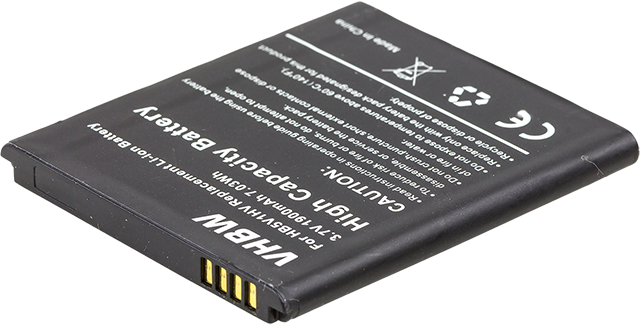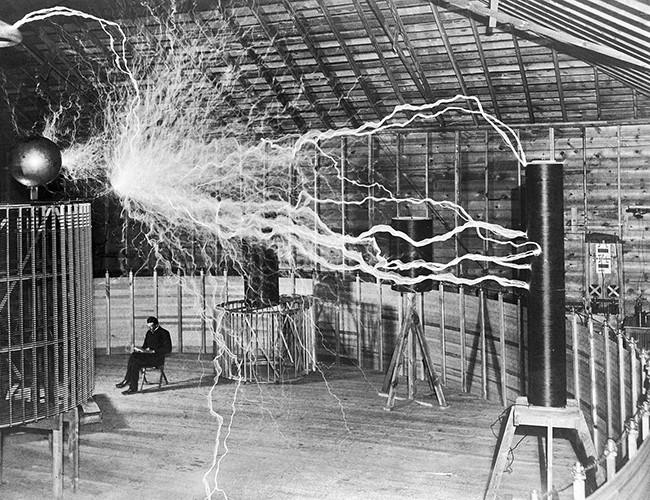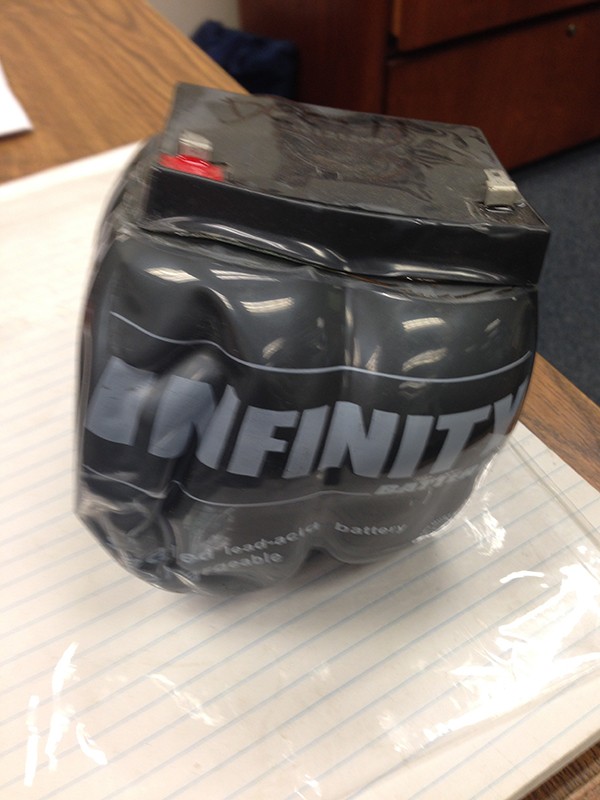The Driving Factor is intrigued by how the battery, as a key storage technology for "green" energy, articulates hope in electric mobility and the "energy transition". Focusing on the lithium-ion battery, the artistic research project challenges the assumption that energy can be harmlessly brought to everyone, everywhere — whether to power electric cars, scooters, mobile phones, or to stabilize the power grid. A closer look at the local contexts along the global supply chain of lithium reveals intransparent, often environmentally damaging practices of raw material extraction and processing. Identifying the battery as part of a longer history of mineral extraction, power, and colonial imaginaries about the future, also helps to visibilize the mechanisms through which human and non-human labor are appropriated, in a continuation of imperialist and colonial logics. The Driving Factor invites inhabitants, artists, researchers, activists and practitioners to think about the lithium-ion battery, wondering: what powers power?
The Driving Factor was instigated in response to the contrasting reactions sparked by the construction of a Tesla Gigafactory in Grünheide, Brandenburg (Germany). Most politicians celebrated an environmentally-friendly technology set to inaugurate the mobility of the future, as well as the creation of new jobs, although Elon Musk’s company is known for deregulating its labor force and being openly anti-union. Locals, however, started showing concern over the grave repercussions the factory will have in the already-depleted groundwater reserves, for the quality of water itself, as well as the flora and fauna of the forest cut down to make room for the factory. As these concerns were largely ignored or even silenced during the public evaluation process of the gigafactory, the global parallels of what initially had seemed a localized conflict started to become clear. Is the promise of "green" mobility, especially in the strategic combination with the "energy transition", not covering up profound violations of ecosystems and civil rights in many other places too?
In fact, the factory nested in Brandenburg’s forest is a knot within an all but "green" global-scale supply chain. The Driving Factor inspects one of its most hyped goods, the lithium battery, and problematizes its feeding promises of autonomy and sustainability that in recent times, are increasingly being put to work to suppress legitimate concerns and needs of the inhabitants. The battery, thus seen, emerges as allegory of a paradoxical accumulation with toxic consequences, although in an unequal planet, those affected as well as the damages vary starkly from place to place. On the other hand, the battery can also be an allegory of stored possibilities: suppressed but resilient capillary ways of doing, producing, collaborating and solidarizing that operate invisibly, in the underground.
In 2022, The Driving Factor approached both allegories in three experimental tours, moving through territories of extraction and accumulation in Berlin, Brandenburg, and Saxony. Each tour followed various cycles in the valorization and devaluation processes of raw materials and landscapes connected with the "energy transition": from the reactivation of the vision of electric mobility in Berlin-Oberschöneweide and Grünheide, to the resumption of mining in Saxony’s Erzgebirge, which holds lithium deposits, against the background of the European Union's push for "energy sovereignty", to the production viz. revaluation of landscape in the aftermath of the phase-out of coal mining in Lusatia.
This webpage represents a digital storage of memories and impressions from those journeys, including their echoes and ghosts from many elsewheres. Joining in in a collaborative charging process, the invited artworks—which ranged from audio and video installations to radio features and performances—various podcasts, interviews, cross-readings, and video documentations, as IMPULSES, complement the tours' logbooks. Certain contributions address intersectional forms of injustice relating to the production of batteries—from the contamination of ecosystems to exploitation and expulsions of humans, animals and plants—while others explore the use of batteries. More paradoxes come to the fore: the fact that lithium batteries are only partially recyclable and difficult to dispose of; that the electricity grids which ought to be fueled by renewables and stabilized by batteries, are at many places yet to be built; that the renewables are not available in the needed quantities at all.
In a time when the transition to an emissions-free and resource-saving energy provision is being pushed to an even further and more insecure future by geopolitical and armed conflicts, The Driving Factor reminds that the most reliable technologies and effective movements of our days are often simple, "soft" technologies and possibilities stored in everyday life, which it is high time to help wire and multiply.
The Driving Factor are: Elisa T. Bertuzzo, Jan Lemitz, Daniele Tognozzi, Mercedes Villalba, Neli Wagner.
CATALYSTS: Helmuth Albrecht (TU Bergakademie Freiberg), Ana Alenso, Martin Bertau (TU Bergakademie Freiberg), Cristóbal Bonelli (University of Amsterdam, ERC Worlds of Lithium), Inge Broska, Bürgerinitiative Grünheide, Aurora Castillo, Oscar Choque (Ayni, Verein für Ressourcengerechtigkeit e.V.), Alison Darby, Perpeto Dyese Wabanza, Constanze Fischbeck, Elizabeth Gallon Droste, Michelle Geraerts (University of Amsterdam, ERC Worlds of Lithium), Eva Hertzsch und Adam Page mit Wolfgang-Amadeus-Mozart-Gemeinschaftsschule und Victor-Klemperer-Kolleg Berlin, Sonja Hornung, Esther Kasongo Muntwabane, Maryam Katan, knowbotiq (Yvonne Wilhelm, Christian Huebler), Can Kurucu, Uwe Metzler, Ramón Morales Balcázar (Observatorio Plurinacional de Salares Andinos), Jan Müggenburg (Leuphana Universität Lüneburg), Éric Mutombo, Susan Newman (The Open University), Canay Özden-Schilling (National University of Singapore), Susanne Reumschüssel (Industriesalon Schöneweide), Andrea Riedel (Stadt- und Bergbaumuseum Freiberg), Leni Roller, Heidemarie Schröder (Wassertafel Berlin Brandenburg), Angela Thomas, Pablo Torres, Thomas Turnbull (Max-Planck-Institut für Wissenschaftsgeschichte), Jens Weber (Grüne Liga Osterzgebirge e.V.), Jack Wolf and many others.
The Driving Factor está intrigado por la forma en que la batería, como tecnología clave de almacenamiento de energía "verde", articula la esperanza en la posibilidad de una "transición energética" impulsada por la movilidad eléctrica. Centrándose en la batería de iones de litio, el proyecto pone en tela de juicio la suposición de que la energía puede llegar sin peligro a todo el mundo y a todas partes, ya sea para alimentar coches o scooters eléctricos, teléfonos móviles o para estabilizar la red eléctrica. Al igual que sus predecesores minerales, el litio depende de una cadena de suministro extractiva que a menudo da lugar a prácticas ecológicas profundamente perjudiciales. Situar la batería como parte de una historia más larga de extracción de minerales, poder, e imaginarios coloniales sobre el futuro nos ayuda a visibilizar los mecanismos a través de los cuales se sigue explotando el trabajo humano y no humano. The Driving Factor invita a su público, artistas, investigadores, activistas y creadores a pensar en la batería de iones de litio de otra manera, preguntándose: ¿qué potencia el poder?
The Driving Factor abordó estas dos alegorías en tres recorridos experimentales, moviéndose por territorios de extracción y acumulación en Berlín, Brandeburgo y Sajonia en julio 2022. Cada recorrió sigue varios ciclos de valorización y devaluación de materias primas y paisajes relacionados con la "transición energética": desde la reactivación de la visión de la movilidad eléctrica en Berlín-Oberschöneweide y Grünheide, pasando por la reapertura de la minería en el Erzgebirge de Sajonia (que alberga yacimientos de litio) hasta la producción y revalorización del paisaje tras el abandono de la minería del carbón en Lusacia.
Para estos viajes a través del espacio y el pensamiento, incluyendo sus ecos y fantasmas de muchos otros lugares, The Driving Factor construye este repositorio digital por el que estás navegando. Podcasts, entrevistas, lecturas cruzadas y documentaciones en vídeo, que se unen a través de un proceso de carga colaborativa, complementan las impresiones de los recorridos y las obras de arte, que van desde las instalaciones de audio y vídeo hasta los reportajes radiofónicos y la performance.
Algunas de las contribuciones artísticas, científicas y activistas reunidas por The Driving Factor abordan formas interseccionales de injusticia relacionadas con la producción de pilas, desde la contaminación de los ecosistemas hasta la explotación y expulsión de seres humanos, animales y plantas. Otros exploran el uso de las pilas y, por tanto, ponen de manifiesto otras paradojas. Por un lado, las baterías de litio son sólo parcialmente reciclables y difíciles de eliminar, por lo que cabe esperar nuevas amenazas medioambientales y sanitarias (que se suman a las causadas por el depósito de materia en el suelo en los lugares de producción). Además, las redes eléctricas que deberían estar alimentadas por energías renovables y estabilizadas por baterías, en muchos lugares aún no se han construido, o las energías renovables no están disponibles en las cantidades necesarias.
Si pensamos en la Europa de 2022, la transición hacia el suministro de energía sin emisiones y con ahorro de recursos que muchos esperaban del "Green Deal" europeo, se ha visto empujada a un futuro aún más lejano e inseguro por la guerra de Ucrania. Desde la perspectiva translocal y posnacional que adopta el proyecto, esa expectativa sólo puede explicarse como una peculiar insistencia en modelos lineales de crecimiento e inversión destinados a asegurar el capital privado y los negocios como siempre. Sin embargo, las tecnologías más innovadoras (a menudo simples y blandas) y los movimientos más eficaces de nuestros días hace tiempo que tomaron caminos diferentes. Son las posibilidades almacenadas en la vida cotidiana que The Driving Factor quisiera ayudar a cablear y multiplicar.
The Driving Factor son: Elisa T. Bertuzzo, Jan Lemitz, Daniele Tognozzi, Mercedes Villalba, Neli Wagner.
CATALIZADORES: Helmuth Albrecht (TU Bergakademie Freiberg), Ana Alenso, Martin Bertau (TU Bergakademie Freiberg), Cristóbal Bonelli (University of Amsterdam, ERC Worlds of Lithium), Inge Broska, Bürgerinitiative Grünheide, Aurora Castillo, Oscar Choque (Ayni, Verein für Ressourcengerechtigkeit e.V.), Alison Darby, Perpeto Dyese Wabanza, Constanze Fischbeck, Elizabeth Gallon Droste, Michelle Geraerts (University of Amsterdam, ERC Worlds of Lithium), Eva Hertzsch und Adam Page mit Wolfgang-Amadeus-Mozart-Gemeinschaftsschule und Victor-Klemperer-Kolleg Berlin, Sonja Hornung, Esther Kasongo Muntwabane, Maryam Katan, knowbotiq (Yvonne Wilhelm, Christian Huebler), Can Kurucu, Uwe Metzler, Ramón Morales Balcázar (Observatorio Plurinacional de Salares Andinos), Jan Müggenburg (Leuphana Universität Lüneburg), Éric Mutombo, Susan Newman (The Open University), Canay Özden-Schilling (National University of Singapore), Susanne Reumschüssel (Industriesalon Schöneweide), Andrea Riedel (Stadt- und Bergbaumuseum Freiberg), Leni Roller, Heidemarie Schröder (Wassertafel Berlin Brandenburg), Angela Thomas, Pablo Torres, Thomas Turnbull (Max-Planck-Institut für Wissenschaftsgeschichte), Jens Weber (Grüne Liga Osterzgebirge e.V.), Jack Wolf y muchos otros.






